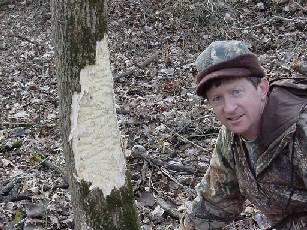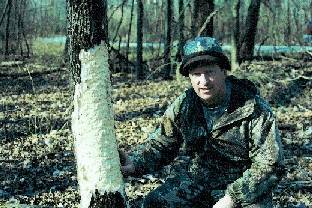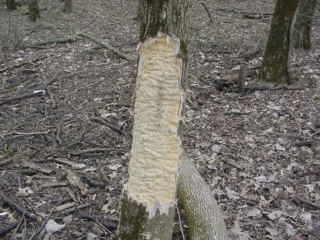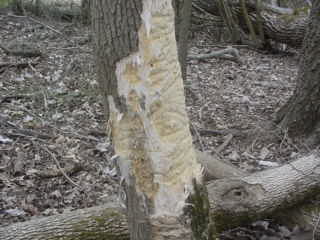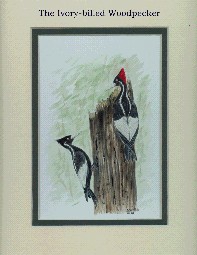 I led a search of the White River National Wildlife Refuge (WRNWR) in January 2003 - the first search in recent history and probably the first permit ever issued by the U. S. Fish and Wildlife Service for Ivory-billed Woodpecker searching in the WRNWR. Seven of us searched for a week. We didn't find any IBWOs, but we did find some interesting bark scaling. This page shows some pictures of what we found.
I led a search of the White River National Wildlife Refuge (WRNWR) in January 2003 - the first search in recent history and probably the first permit ever issued by the U. S. Fish and Wildlife Service for Ivory-billed Woodpecker searching in the WRNWR. Seven of us searched for a week. We didn't find any IBWOs, but we did find some interesting bark scaling. This page shows some pictures of what we found.
Ivory-billed Woodpecker searching in the White River National Wildlife Refuge in southeast Arkansas in 2003
Scaled tree found January 3, 2003 in the White River National Refuge.
The same tree on January 25.
Same tree on March 25. More scaling.
The scaling extended around the left side (as seen in the other photos).
Same tree on July 20. Note that the older scaling at the bottom is weathered.
The scaling on the other side of the tree was also extended. There were several "test" areas higher on the tree, also.
After additional scaling was found on January 25, two remote cameras were set up to photograph the tree in an attempt to catch a picture of the creature stripping the bark. Additional scaling was noticed by wildlife personnel at the refuge in early February when the first camera, a video camera with a laser detector, was retrieved. The video camera was removed for use on another project, but the still camera was left for a couple more weeks. The video camera did not record anything. Whatever did the additional scaling managed to avoid the infrared laser detector.
The still camera was retrieved in February, and the film was developed. There were only two shots taken, and neither showed a bird - just a tree!
Many thanks to Richard Hines, the refuge biologist, for placing the cameras and checking them. He said that the latest film he had developed (3/25) still didn't pick up the "culprit". More details on the camera as they come available.
I checked the tree again on July 20. There was additional extensive scaling and a lot of gouging. Still no idea what is doing it.
